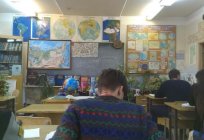Now - 20:43:15
The study of Antarctica, scientists from Russia
The Study of Antarctica — a story that illustrates the unrestrained human desire for knowledge of the world, the story about strength of spirit and willingness to take risks. The sixth continent, theoretically located to the South of Australia and the Americas for several centuries has excited the researchers and cartographers. However, the history of research in Antarctica began only in 1819 with the world tour Russian navigators Bellingshausen and Lazarev. It was then given to start the development of huge ice space, which continues to this day.
Centuries
For Almost two thousand years before the time when there was an opening and the first research of Antarctica, ancient geographers have said of its existence. Then there was a lot of assumptions about what constitutes a remote earth. The name “Antarctic” came during this period. It first found Martin tyre in the second century of our era. One of the authors of the hypothesis about the unknown continent was the great Aristotle, suggesting that the Earth was symmetrical, and that Africa is another continent.
The Legend arose later. On some maps, attributable to the middle Ages, shows clearly the image of "southern land" are often located separately or connected with America. In 1929, he found one of them. Map of Admiral Piri Reis, dated to 1513, allegedly contains a very detailed and accurate depiction of the coastline of Antarctica. Where the originator got the information for his map, still remains a mystery.
Recommended
"Knowledge is light and ignorance is darkness": the value, meaning and alternatives
There are some sayings that would seem to need no explanation, such as “teaching & ndash; light and ignorance – darkness”. But some still do not understand their meaning. But not only for such people is written by our article. I...
What was invented by Mendeleev for the army. The history and fate of the invention
D. I. Mendeleev was a brilliant Russian scientist-polymath, who made many important discoveries in various fields of science and technology. Many people know that he is the author of “Fundamentals of chemistry" and the periodic law of chem...
The origin of the Slavs. The influence of different cultures
Slavs (under this name), according to some researchers, appeared in the story only in 6 century ad. However, the language of nationality bears the archaic features of the Indo-European community. This, in turn, suggests that the origin of the Slavs h...
Getting closer
The era of the Great geographical discoveries not marked by the discovery of the sixth continent. Studies European explorers only narrowed the range of searches. It became clear that the South American continent “attached” to any unknown land. And in 1773, James cook for the first time in history crossed the Arctic circle and found several Antarctic Islands, but that is limited. One of the biggest events in geography occurred after about 50 years thereafter.
Getting the path
The Discovery and first investigations of Antarctica took place under the command of Thaddeus Bellingshausen Faddeevich and with the direct participation of Mikhail Petrovich Lazarev. In 1819, from Kronstadt to the South pole an expedition of two ships, “peace” and “East”. The first was heavily fortified and equipped with Lazarev for sailing in the harshest conditions. The second was created by English engineers, and in many respects lost «Peace». At the end of the journey he was the reason for the early return of the expedition: the ship came in a deplorable state.
The Ships out to sea on July 4 and by 2 November had already reached Rio de Janeiro. Following the planned course, they rounded the South Georgia island and approached the Land of the Sandwich. She was identified as the archipelago and renamed the South sandwich Islands. Among them there were discovered three new Islands: Leskov, Zavadovsky and Thorson.
The Study of Antarctica Bellingshausen and Lazarev
The Opening took place on 16 (27 new style) January 1820. The ships approached the sixth continent in the area called today shelf of the Bellingshausen glacier, the shores of the Princess Martha. Before the onset of the Arctic winter, when much worse weather conditions, the expedition several times approached the mainland. Closest to the continent the ship was 5 and 6 (17 and 18) February.
The Study of Antarctica Lazarev and Bellingshausen continued after the arrival of summer. In the result of swimming were put on the map a number of new features: the island of Peter the great, mountainous, partly ice-free land of Alexander I; the island of the Three brothers, known today as Aspland and O’Brienne; island rear Admiral Rozhnova (today — Gibbs), the island Mikhailov (Cornwall), the island of Admiral Mordvinov (Elephant), island of Vice Admiral Shishkov (Clarence).
The First study of Antarctica was completed on 24 July 1821, when both ships returned to Kronstadt.
Contribution of the expedition
Sailors under the command of Bellingshausen and Lazarev during his studies went around Antarctica. They mapped a total of 29 Islands and, of course, the mainland. In addition, they have collected unique to the last century data. In particular, Bellingshausen found that salt water freezes just the same as fresh, contrary to the assumptions of scientists of the time. The only difference — require a lower temperature. Ethnographic and natural-science collection, who arrived together with the mariners in Russia, is now kept in Kazan University. To overestimate the importance of expedition impossible, however, the history of exploration and discovery of Antarctica, it has only just begun.
Development
Each expedition to the sixth continent was a specific feat. The harsh conditions of a cold desert almost did not leave a chance to the people, ill-prepared or disorganized. The first studies of Antarctica scientists was particularly difficult because participants could not be imagined before the end that awaits them.
Such was the case of the expeditionCarsten Egeberg Borchgrevink. His team made the first documented landing on the coast of Antarctica in 1899. The main thing that reached the expedition — it's winter. It became clear that to survive in the harsh conditions of the ice desert during polar night you can, if you have a well-equipped shelter. However, the place for wintering was chosen very badly, and the home team came back in full force.
At the beginning of the last century had been reached the South pole. For the first time he came to a Norwegian expedition led by Roald Amundsen in 1911. Soon after she reached the South pole, the team of Robert Scott, who died on the way back. However, most large-scale development of the cold desert began in 1956. a Study of Antarctica has acquired a new character — now it was conducted on an industrial basis.
International geophysical year
In the middle of the last century in the exploration of Antarctica was targeted by many countries. As a result, in 1957-1958 twelve States threw their strength on the development of the ice desert. This time, it was declared the International geophysical year. History of exploration of Antarctica, probably as fruitful periods.
It Was established that the ice “breathing” of the sixth continent carried away by the currents and air currents far to the North. These data have made possible more accurate weather forecasting on Earth. During the study much attention was paid to the indigenous naked rocks, who can tell a lot about the structure of our planet. Was collected and a large amount of data about such phenomena as the Northern lights, magnetic storms and cosmic rays.
The Study of Antarctica, Russian scientists
Of Course, in scientific work of those years played a huge role in the Soviet Union. Inland was founded several stations, it regularly headed the research team. In preparation for the International geophysical year was established by the Soviet Antarctic expedition (SAE). Its task was to study the processes occurring in the atmosphere of the continent, and their influence on the circulation of air masses, the geological characteristics of the terrain and its physical-geographical description, identifying travel patterns of the Arctic waters. The first expedition landed on the ice in January 1956, on the 13th of February, the station was opened “peace”.
As a result of work of Soviet polar explorers significantly reduced the number of white spots on the map of the sixth continent. Was discovered more than three hundred geographical features such as Islands, bays, valleys and mountain ranges. Conducted seismic studies. They helped to establish that Antarctica — a group of Islands, as at that time it was assumed, and the mainland. The most valuable information is often found as a result of the researchers ' work to the limit, in the process of the most difficult expeditions into the continent.
In the years of most active research in Antarctica operated eight stations working in the winter and summer. During the Polar night on the continent was 180 people. Since the beginning of summer, the number of expeditions grew to 450 participants.
Successor
After the collapse of the Soviet Union a study of the Antarctic has not stopped. To replace the EPS came Russian Antarctic expedition. With the improvement of technologies has made possible a more detailed study of the sixth continent. Antarctic research scientists from Russia were made in several areas: determination of climatic, geophysical and other features of the continent, the influence of atmospheric phenomena on weather conditions in other areas of the world, the collection and analysis of data on anthropogenic load stations on the environment.
Since 1959, when he was signed “the Antarctic Treaty" of the ice continent became a place for international cooperation, free from military activity. The development of the sixth continent was carried out by several countries. The study of Antarctica in our time — an example of cooperation for the sake of scientific progress. Often Russian teams have an international composition.
Mysterious lake
Almost none of the messages about modern studies, Antarctica is not complete without mentioning a rather interesting object discovered under the ice. Its existence was predicted by A. P. Kapitsa and I. A. Zotikov after completion of the geophysical year on the basis of the period data. It is a freshwater lake Vostok, located near the station under the ice layer of 4 km the discovery led the survey of Antarctica by Russian scientists. It happened officially in 1996, although already in the late 50's, work was conducted to study the lake, according to Kapitsa and Zotikova.
The Discovery stirred up the scientific world. Such a subglacial lake is completely isolated from contact with the earth's surface, and over millions of years. Theoretically it is fresh water with high oxygen concentration may be the habitat of organisms still unknown to scientists. A favorable factor for the development of life ishigh enough temperature of the lake — to +10º on the bottom. On the boundary separating the surface of the pond and ice, colder — -3º. The depth of the lake is estimated at 1200 m.
Detection of unknown flora and fauna has led to the decision to drill the ice in the center East.
Latest data
Drilling through the ice in the area of the reservoir began in 1989. After ten years it was suspended at a distance of approximately 120 m from the lake. The reason is the fear of foreign researchers is pollution of the ecosystem of the particles from the surface, in which a unique community of organisms may be affected. Russian scientists did not share this view. Soon we developed and tested a new, more environmentally friendly equipment, and in 2006, the drilling process resumed.
The surface of the lake was reached on 5 February 2012. Water samples were sent to the study. The results of the study of several samples published in July 2013 In the samples were detected over three and a half thousand of unique DNA sequences, 1623 of which were correlated with a specific genus or species: 94 % — bacteria, 6 % — eukaryotes (mainly fungi) and two sequences belong to the archaea. There were signs to suggest that in the lake there are larger organisms. Part of the bacteria found represent parasites of fish, because, perhaps, in the process of further research will discover them.
A Number of scholars refers to the results very skeptical, saying such a variety of sequences with mud, entered the drill. In addition, it is likely that the great majority of organisms, which may belong to DNA found has long been lost. Anyway, research of Antarctica, scientists from Russia and several countries in the area continues.
Hello from the past and look to the future
The Interest in lake Vostok due to including the opportunity to study the ecosystem similar to those that could exist on Earth many years ago, during the late Proterozoic. Then on our planet have changed each other several global glaciations, each of which lasted for ten million years.
In addition, the study of the Antarctica in the lake district, the process of drilling wells, the collection, analysis and interpretation of results can be useful in the future development of the satellites of the gas giant Jupiter, Europa and Callisto. Presumably, under the surface there are similar to the lake with its preserved ecosystem. If the hypothesis is confirmed, “residents” subglacial lakes of Europe and Callisto could be the first organisms discovered outside of our planet.
The History of exploration and discovery of Antarctica is well illustrated by the constant human desire to expand their own knowledge. The study of the sixth continent, like the international space station — an example of peaceful cooperation many States for scientific purposes. The icy continent, however, is in no hurry to reveal their secrets. Harsh conditions demand constant perfection of technology, scientific equipment and often work of the human spirit and body to the limit. The inaccessibility of the sixth continent for the most part, the existence of an impressive number of gaps in the knowledge about it gives rise to many legends about Antarctica. The curious can easily find information about the hiding places of the Nazis, UFOs and predatory glowing balls that kills people. As for the case, known only to explorers. Proponents of academic versions of can safely hope that soon we will know about Antarctica a little more, and then slightly reduced the number of mysticism Shrouding the continent.
Article in other languages:
AR: https://tostpost.com/ar/education/4749-the-study-of-antarctica-scientists-from-russia.html
BE: https://tostpost.com/be/adukacyya/8442-dasledavanne-antarktydy-navuko-cam-rase.html
ES: https://tostpost.com/es/la-educaci-n/8446-el-estudio-de-la-ant-rtida-cient-ficos-de-rusia.html
HI: https://tostpost.com/hi/education/4752-the-study-of-antarctica-scientists-from-russia.html
JA: https://tostpost.com/ja/education/4750-the-study-of-antarctica-scientists-from-russia.html
KK: https://tostpost.com/kk/b-l-m/8444-zertteu-antarktida-alymdar-resey.html
PL: https://tostpost.com/pl/edukacja/8447-badanie-antarktydy-naukowcy-rosji.html
PT: https://tostpost.com/pt/educa-o/8442-a-pesquisa-na-ant-rtida-cientistas-da-r-ssia.html
TR: https://tostpost.com/tr/e-itim/8448-ara-t-rma-antarktika-bilim-adamlar-rusya.html
UK: https://tostpost.com/uk/osv-ta/8446-dosl-dzhennya-antarktidi-vchenimi-ros.html
ZH: https://tostpost.com/zh/education/5162-the-study-of-antarctica-scientists-from-russia.html

Alin Trodden - author of the article, editor
"Hi, I'm Alin Trodden. I write texts, read books, and look for impressions. And I'm not bad at telling you about it. I am always happy to participate in interesting projects."
Related News
The calcium oxide. Physical, thermal and chemical properties. Application.
calcium Oxide – the crystalline compound of white color. Other names for this substance-quicklime, calcium oxide, “terabit”, “quicklime". Calcium oxide, the formula of which is CaO, and a product of in...
College of geodesy and cartography MIIGAiK: address, admissions, specialties, reviews
Many applicants seeking to enter such professions, which are now popular. However, there are people who want to get some unusual or infrequently encountered profession, but very important and interesting. Corresponding to such req...
As the vocabulary of the Russian language: advice
the Great Russian language! Studies of modern linguists show: there are about two hundred thousand words. However, the average Russian uses in everyday life not more than three thousand vocabulary. There are many methods how to im...
the Achilles ' heel-idiom denoting the weakness, the vulnerability of any company or person. It can be a personality trait, a feature which spoils the life of, or imperfection in the organization of the business – all that a...
Knowledge is... knowledge. The area of expertise. Knowledge check
Knowledge is a very broad concept with multiple definitions, different forms, levels and characteristics. What is a distinctive school of knowledge? What areas do they cover? And why do I need to check the knowledge? Let's start w...
Peat - what is it? Production, properties and use of peat
According to approximate calculations of scientists, as of today, the reserves of peat on the planet are in the order of five hundred billion tons. While a large share is concentrated in the Northern hemisphere. The reason for thi...























Comments (0)
This article has no comment, be the first!